

July 10 – 16: “Why is the combination of villains and beauty so alluring?”
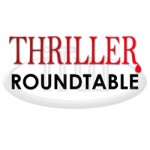 Whether the orchids in Heat of the Night, or the exotic tales of Uncle Charlie in Alfred Hitchcock’s Shadow of a Doubt, why is the combination of villains and beauty so alluring? With ThrillerFest in full swing this week, we’re joined by ITW Members Meg Gardiner, Peter James, S. A. Stovall, Holly Seddon, Alec Cizak, Catherine Finger, Billy Lyons, Ellen Kirschman and Meredith Anthony. You won’t want to miss it!
Whether the orchids in Heat of the Night, or the exotic tales of Uncle Charlie in Alfred Hitchcock’s Shadow of a Doubt, why is the combination of villains and beauty so alluring? With ThrillerFest in full swing this week, we’re joined by ITW Members Meg Gardiner, Peter James, S. A. Stovall, Holly Seddon, Alec Cizak, Catherine Finger, Billy Lyons, Ellen Kirschman and Meredith Anthony. You won’t want to miss it!
~~~~~
 Meg Gardiner is the Edgar Award winning, internationally bestselling author of thirteen thrillers. Her current title, UNSUB (June 2017) has been bought for development as a television series by CBS. She lives in Austin, Texas.
Meg Gardiner is the Edgar Award winning, internationally bestselling author of thirteen thrillers. Her current title, UNSUB (June 2017) has been bought for development as a television series by CBS. She lives in Austin, Texas.
 Peter James is one of the UK’s biggest selling crime thriller writers. He’s had eleven consecutive Sunday Times No 1 bestsellers with his Detective Superintendent Roy Grace series, published in 37 languages in 52 countries, with world sales of 18m copies. He is the recipient of the 2016 CWA Diamond Dagger for sustained excellence, and in 2015 was publicly voted by WH Smith readers as the Best Crime Author of All Time. He lives with his wife, Lara, and a menagerie of animals near Brighton in Sussex, where he was born and raised, and in Notting Hill, London.
Peter James is one of the UK’s biggest selling crime thriller writers. He’s had eleven consecutive Sunday Times No 1 bestsellers with his Detective Superintendent Roy Grace series, published in 37 languages in 52 countries, with world sales of 18m copies. He is the recipient of the 2016 CWA Diamond Dagger for sustained excellence, and in 2015 was publicly voted by WH Smith readers as the Best Crime Author of All Time. He lives with his wife, Lara, and a menagerie of animals near Brighton in Sussex, where he was born and raised, and in Notting Hill, London.
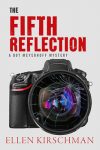 Ellen Kirschman is an award winning police psychologist, the author of three non-fiction books and the Dot Meyerhoff mystery series. Dr. Meyerhoff—too dedicated for her own good—is a spunky 50 year old psychologist who should be counseling cops, not solving crimes. The Fifth Reflection, launching this month, is third in the series after Burying Ben and The Right Wrong Thing.
Ellen Kirschman is an award winning police psychologist, the author of three non-fiction books and the Dot Meyerhoff mystery series. Dr. Meyerhoff—too dedicated for her own good—is a spunky 50 year old psychologist who should be counseling cops, not solving crimes. The Fifth Reflection, launching this month, is third in the series after Burying Ben and The Right Wrong Thing.
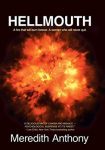 Meredith Anthony is the author of the new thriller, HELLMOUTH, featured in the July issue of The Big Thrill. She is the co-author of LADYKILLER, which received over 30 rave reviews. Her short stories appear in ELLERY QUEEN MYSTERY MAGAZINE and ALFRED HITCHCOCK MYSTERY MAGAZINE. Her mystery play, MURDER ON THE MAIN LINE, has had readings and development productions in New York and Philadelphia. She lives in New York City.
Meredith Anthony is the author of the new thriller, HELLMOUTH, featured in the July issue of The Big Thrill. She is the co-author of LADYKILLER, which received over 30 rave reviews. Her short stories appear in ELLERY QUEEN MYSTERY MAGAZINE and ALFRED HITCHCOCK MYSTERY MAGAZINE. Her mystery play, MURDER ON THE MAIN LINE, has had readings and development productions in New York and Philadelphia. She lives in New York City.
 Like her heroine Police Chief Jo Oliver, DR. CATHERINE FINGER is committed to protect and serve. But instead of handcuffs and handguns, she uses her wit and wisdom as a high school superintendent and church and community volunteer in northern Illinois. Anchored by Death is the third novel in her Jo Oliver thriller series.
Like her heroine Police Chief Jo Oliver, DR. CATHERINE FINGER is committed to protect and serve. But instead of handcuffs and handguns, she uses her wit and wisdom as a high school superintendent and church and community volunteer in northern Illinois. Anchored by Death is the third novel in her Jo Oliver thriller series.
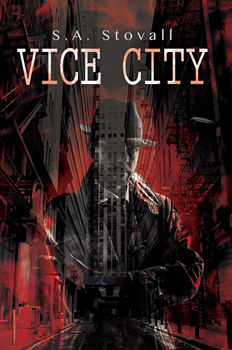 S.A. Stovall grew up in California’s central valley with a single mother and little brother. Despite no one in her family having a degree higher than a GED, she put herself through college (earning a BA in History), and then continued on to law school where she obtained her Juris Doctorate. As a child, Stovall’s favorite novel was Island of the Blue Dolphins by Scott O’Dell. The adventure on a deserted island opened her mind to ideas and realities she had never given thought before—and it was the moment Stovall realized that storytelling (specifically fiction) became her passion. Anything that told a story, be it a movie, book, video game, or comic, she had to experience. Now as a professor and author, Stovall wants to add her voice to the myriad of stories in the world, and she hopes you enjoy.
S.A. Stovall grew up in California’s central valley with a single mother and little brother. Despite no one in her family having a degree higher than a GED, she put herself through college (earning a BA in History), and then continued on to law school where she obtained her Juris Doctorate. As a child, Stovall’s favorite novel was Island of the Blue Dolphins by Scott O’Dell. The adventure on a deserted island opened her mind to ideas and realities she had never given thought before—and it was the moment Stovall realized that storytelling (specifically fiction) became her passion. Anything that told a story, be it a movie, book, video game, or comic, she had to experience. Now as a professor and author, Stovall wants to add her voice to the myriad of stories in the world, and she hopes you enjoy.
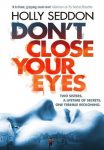 Holly Seddon is a full time writer, living slap bang in the middle of Amsterdam with her husband, James and a house full of children and pets. Holly has written for newspapers, websites and magazines since her early 20s after growing up in the English countryside, obsessed with music and books. Her first novel Try Not to Breathe was published worldwide in 2016 and became a domestic and international bestseller. Don’t Close Your Eyes is her second novel.
Holly Seddon is a full time writer, living slap bang in the middle of Amsterdam with her husband, James and a house full of children and pets. Holly has written for newspapers, websites and magazines since her early 20s after growing up in the English countryside, obsessed with music and books. Her first novel Try Not to Breathe was published worldwide in 2016 and became a domestic and international bestseller. Don’t Close Your Eyes is her second novel.
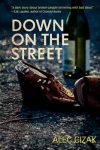 Alec Cizak is a writer and filmmaker from Indianapolis. His short fiction has appeared in several journals and anthologies. He is also the editor of the fiction journal Pulp Modern.
Alec Cizak is a writer and filmmaker from Indianapolis. His short fiction has appeared in several journals and anthologies. He is also the editor of the fiction journal Pulp Modern.
 Billy Lyons became an avid reader and writer of horror fiction in early childhood. He is the author of two published short stories. “Cell 334” was published in the November 2014 edition of Another Realm Magazine. “Black-Eyed Children, Blue-Eyed Child” was published in High Strange Horror, a horror anthology published in 2015 by Muzzleland Press, where Billy is a contributing writer of book and magazine reviews. Blood and Needles is his debut novel.
Billy Lyons became an avid reader and writer of horror fiction in early childhood. He is the author of two published short stories. “Cell 334” was published in the November 2014 edition of Another Realm Magazine. “Black-Eyed Children, Blue-Eyed Child” was published in High Strange Horror, a horror anthology published in 2015 by Muzzleland Press, where Billy is a contributing writer of book and magazine reviews. Blood and Needles is his debut novel.
- LAST GIRL MISSING with K.L. Murphy - July 25, 2024
- CHILD OF DUST with Yigal Zur - July 25, 2024
- THE RAVENWOOD CONSPIRACY with Michael Siverling - July 19, 2024
